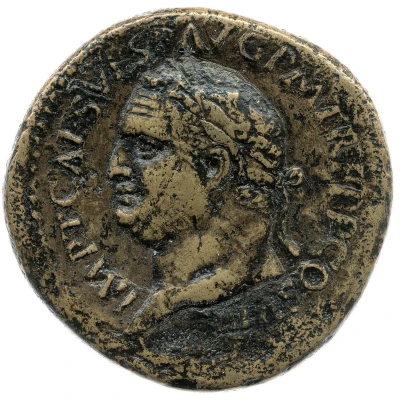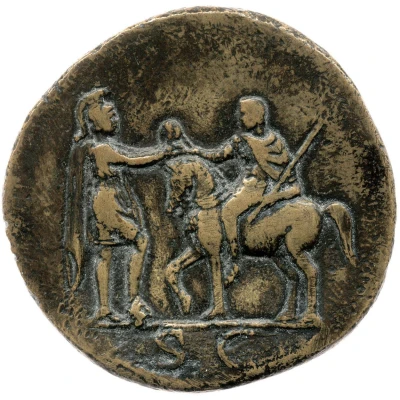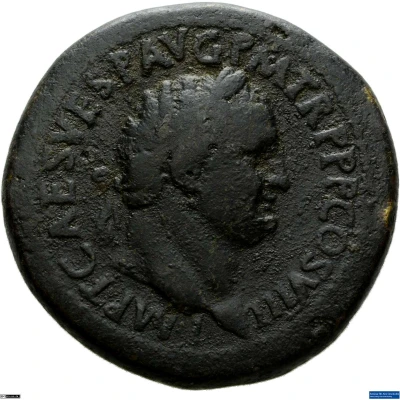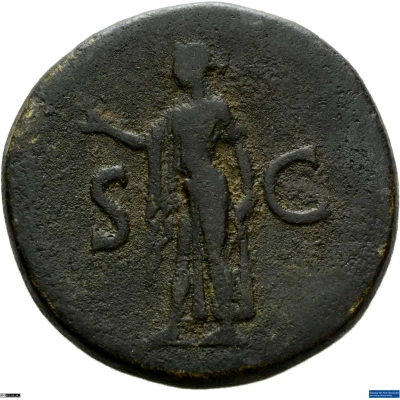
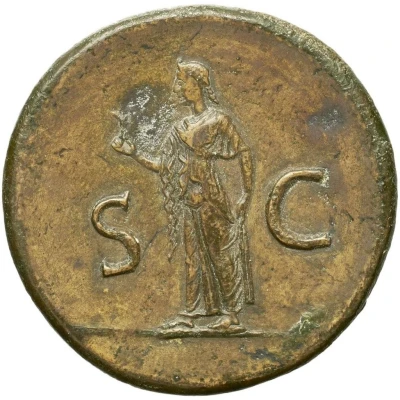

© Bibliothèque nationale de France / Gallica
Sestertius - Titus S C; Spes
| Bronze | 26.3 g | 35.5 mm |
| Issuer | Rome › Roman Empire (27 BC - 395 AD) |
|---|---|
| Emperor | Titus (Titus Flavius Vespasianus) (79-81) |
| Type | Standard circulation coin |
| Years | 80-81 |
| Value | 1 Sestertius = ¼ Denarius |
| Currency | Denarius, Reform of Augustus (27 BC – AD 215) |
| Composition | Bronze |
| Weight | 26.3 g |
| Diameter | 35.5 mm |
| Shape | Round (irregular) |
| Technique | Hammered |
| Orientation | Variable alignment ↺ |
| Demonetized | Yes |
| Updated | 2024-10-06 |
| Numista | N#250934 |
|---|---|
| Rarity index | 100% |
Reverse
Spes standing, left holding flower in right and raising skirt with left.
Script: Latin
Lettering: S C
Unabridged legend: Senatus Consultum
Translation:
Senatus Consultum.
Decree of the senate.
Comment
Mass varies: 21.06–31.08 g;Diameter varies: 34–37 mm;
Source: Online Coins of the Roman Empire (OCRE)
Interesting fact
One interesting fact about the Sestertius - Titus (S C; Spes) coin is that it features an image of the Roman goddess Spes, who represents hope, on the reverse side. This is significant because it suggests that the Roman Empire, which was known for its military conquests and political power, also valued the idea of hope and the positive aspects of life. Additionally, the coin's design highlights the importance of bronze as a material for currency during this time period, as it was a widely available and durable metal that could be used to produce a large quantity of coins. Overall, the Sestertius - Titus (S C; Spes) coin offers a unique glimpse into the cultural and economic practices of the Roman Empire during the 1st century AD.
